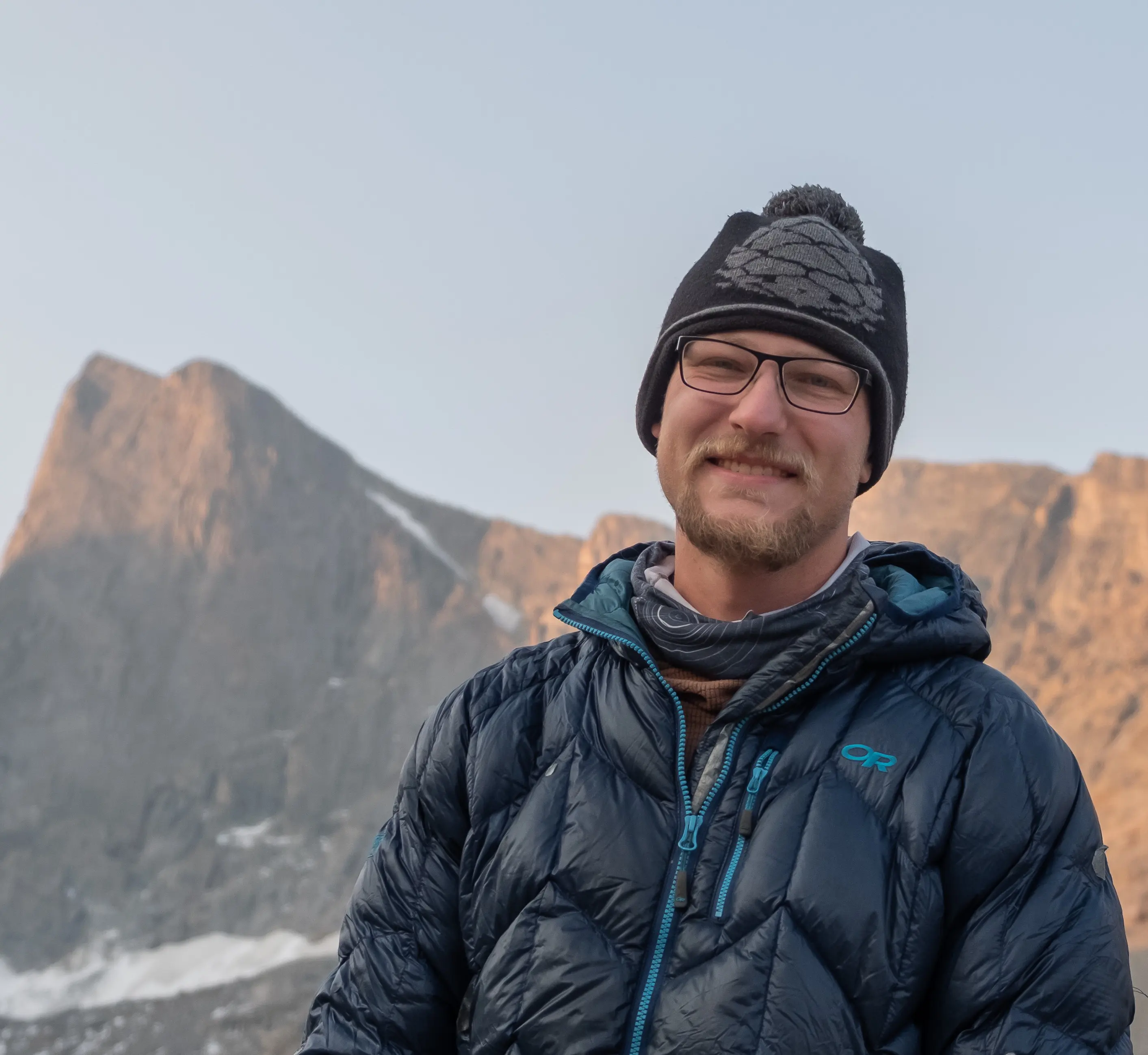The rings of a tree: a dendrochronologist’s tale
Meet Daniel “Donny” Perret

Donny Perret, Ph.D., never imagined he would have a full-circle moment with his research that involved working with wood just like his luthier parents. (Photo Credit: Donny Perret).
Daniel “Donny” Perret, Ph.D., grew up in a music-oriented family and assumed he’d follow a similar path with his career. At an early age, he began to play viola, among other instruments, and his parents were luthiers, a craftsperson who specializes in string instruments. This gave Perret only a faint outline of what a career in academic research looked like. Outside of music, he spent most of his time outside exploring the forest behind his house. As Perret got older, his outdoor activities grew into spending weekends hiking where he became fascinated with the second-growth forest of New England. At age 17, he ultimately decided on pursuing a degree in ecology and environmental studies.
“There are stories about how people shape the environment and how the environment shapes them back in return, hidden all over the place – in old stone walls running through the woods, in an overgrown wagon track, in how the tree species are different in a forgotten woodlot than in the rest of the forest,” he said. “When I went to college, I decided to pursue those stories instead of focusing on music.”
The summer before his senior year of undergraduate, Perret participated in an internship at Yellowstone National Park shaping his passion for ecology even more. After graduation, Perret moved to Yellowstone to contribute to the Yellowstone Wolf Project. Later, he decided to pursue a doctoral degree and moved back to the east coast to study at Brown University under the guidance of professor Dov Sax, Ph.D.
“It was during graduate school that my focus shifted back to trees, forests and the ways that people interact with them,” Perret said. “I ended up doing a lot of tree-ring based research, which felt like coming full circle – working with wood just like my parents, but in a very different context.”
Shortly before his dissertation defense, Perret discovered the Oak Ridge Institute for Science and Education through an ecology email list. The opportunity’s research aligned with Perret’s interests and he wanted to gain experience in a federal research sphere, so he applied and was accepted. Now, Perret is with the United States Department of Agriculture Forest Service (USDA Forest Service) at the Pacific Northwest Research Station.
The USDA Forest Service Research Participation Program is funded by the U.S. Department of Agriculture U.S. Forest Service Office and administered through the U.S. Department of Energy’s (DOE) Oak Ridge Institute for Science and Education (ORISE). ORISE is managed for DOE by ORAU.
Perret collaborates on research alongside Harold Zald, Ph.D., David Bell, Ph.D. and Andrew Gray, Ph.D., where the group aims to gain a better predictive understanding of how tree species and the forests they form respond to changing climates and disturbances. Perret initially provided the first range-wide assessment of population status, trends and mortality drivers of subalpine fir, Abies lasiocarpa. In doing so, the team was able to discover that subalpine fir populations are in generalized decline across 55% of the species’ distribution which they believe is driven by high mortality related to physical and biological disturbances.
“Our research has found that reducing wildfire extent and severity is the single best way to bolster the resilience of these subalpine forests in the future, even when accounting for projected future climate change,” he said. “We are using this research to identify where the greatest opportunities are to implement these management interventions in the most impactful way, which can help guide conservation and management decision-making into the future.”
Among other initiatives, the team is also investigating how sugar pine, Pinus lambertiana, in southern Oregon and California respond to chronic drought, insects, disease and fire in the context of climate change. Perret spent last summer collecting tree core samples all over forests in Oregon and the Sierra Nevada that will be used to examine how sugar pine growth has responded to drought and other changes in climate, both recently and in the more distant past.
Perret’s appointment challenges him to confront the limits of knowledge, come up with creative ways to tackle different problems and ultimately, to learn. Intellectual freedom and the ability to explore and grow is one of the many reasons why Perret believes the opportunity to be an invaluable source of insight into federal research as a career path. So far, he has gained experience using USDA Forest Service inventory data for research and has applied ecological research to current problems in forest ecology and management.
When away from his research, Perret finds himself back outside participating in whitewater kayaking, mountain biking and backcountry skiing with his dog and wife, Molly McDevitt, who he praises as an “incredible wildlife biologist”. However, Perret still channels his musical passion by playing mandolin and guitar in a bluegrass band that performs locally and regionally. Like the field he studies, Perret’s life journey resembles the rings of a tree; a representation of the years of growth and inability to stray away from what he knows best. As this just scrapes the surface of Perret’s inspiring journey, more information on his research and adventures can be found on his website.
The USDA Forest Service Research Participation Program is funded by the U.S. Department of Agriculture U.S. Forest Service Office and administered through the U.S. Department of Energy’s (DOE) Oak Ridge Institute for Science and Education (ORISE). ORISE is managed for DOE by ORAU.

